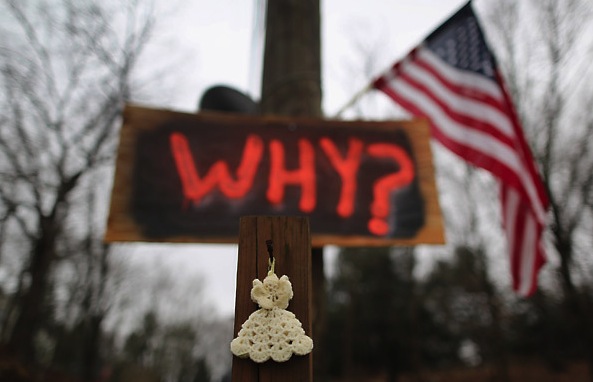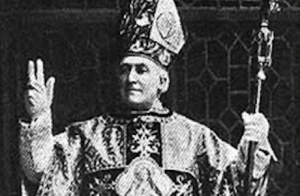From the beginning, there was a familiar moral tension at the heart of news coverage of the Sandy Hook Elementary School massacre. It’s hard to ponder such a hellish act without wanting to be able to name the demon, to link the actions of the young gunman to some kind of logical motive.
Was religion involved? Maybe. Maybe not.
Did faith play any role in the dramas inside the silent home in which Adam Lanza and his mother Nancy lived those final years of their lives? Her funeral was held in the First Congregational Church of Kingston, N.H., but that could have been a simple matter of convenience — choosing the historic church in the middle of the typical New England public square.
Was evil involved in this tragedy? Yes. But what kind? As I wrote early on, in a post here at GetReligion:
In most cases, debates about massacres of this kind devolve into discussions between gun-control liberals, gun-freedom libertarians and various kinds of cultural conservatives who see evidence of various forms of social decay — from violence in our movies, to splintered homes, to increasingly value-neutral schools, to first-person-shooter video games that resemble the programs our military leaders use to make soldiers more willing to pull triggers in combat. Then there are people like me whose beliefs fall in more than one of these camps.
At the very least, Newtown was another one of those stories that — logically enough — pushes people to ask that ancient/modern question: Where was God? As your GetReligionistas noted at the time, there is a theological name for that puzzle and, tragically, anyone who wants to cover the religion beat needs to know it:
the·od·i·cy noun …
: defense of God’s goodness and omnipotence in view of the existence of evil
The painful, dry New York Times report about the final Sandy Hook report makes it perfectly clear that the investigators have not been able to name that evil and they refused to speculate about Lanza’s motive, even though it it is clear that his actions were premeditated.
If there was a motive, it almost certainly was contained in one particular computer hard drive that Lanza destroyed, doing such a meticulous job that investigators were not able to recover the contents. The lede describes the key location in this story, which was the computer-driven Lanza’s darkened haven from the outside world:








